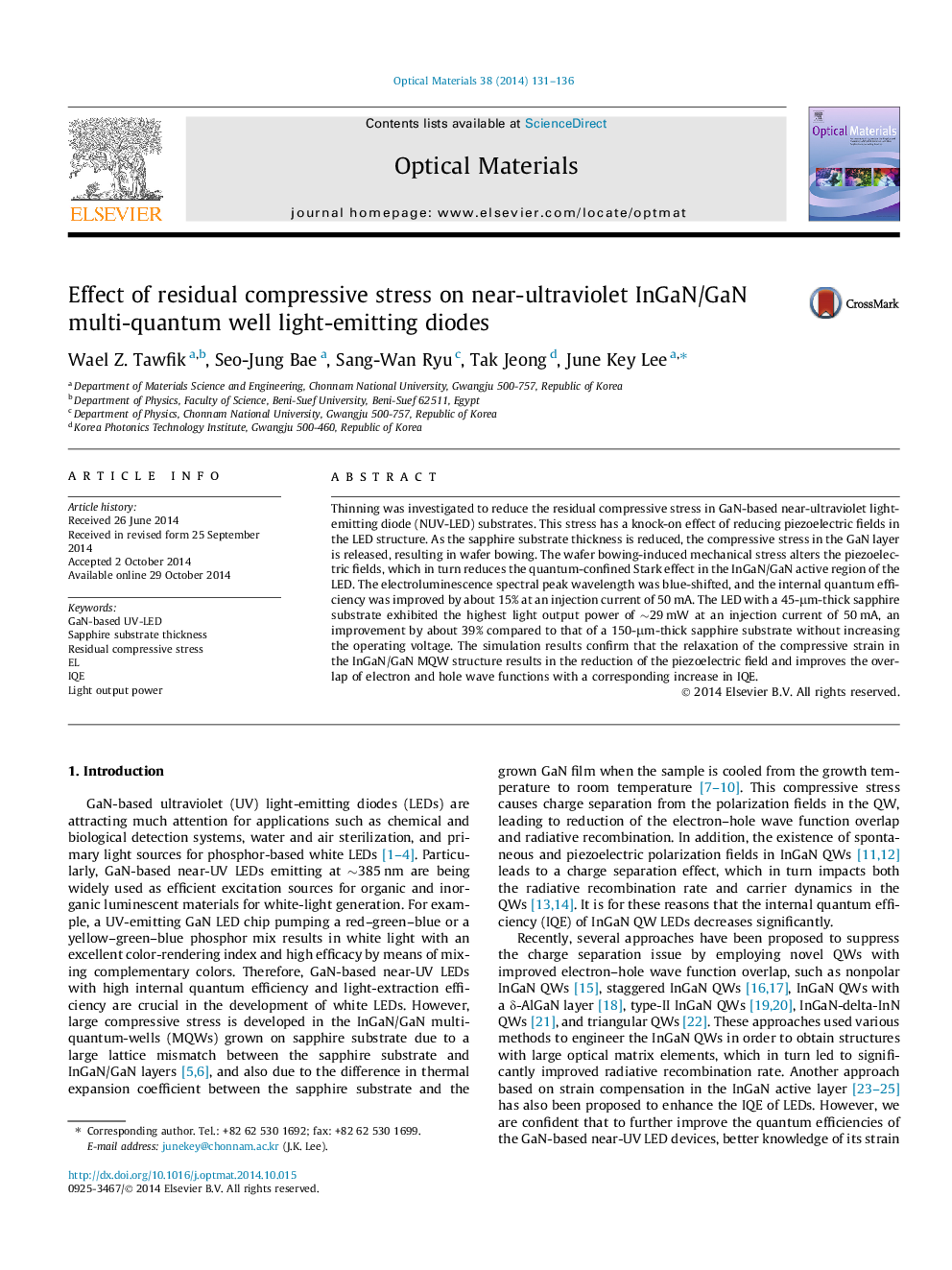| Article ID | Journal | Published Year | Pages | File Type |
|---|---|---|---|---|
| 1494022 | Optical Materials | 2014 | 6 Pages |
•Thinning was investigated to reduce the residual compressive stress in GaN layer.•Releasing the compressive stress, causes the wafer bowing.•The wafer bowing-induced mechanical stress alters the piezoelectric field.•The EL spectral peak wavelength was blue-shifted and the IQE was improved.•The simulation results are in a good agreement with the experimental data.
Thinning was investigated to reduce the residual compressive stress in GaN-based near-ultraviolet light-emitting diode (NUV-LED) substrates. This stress has a knock-on effect of reducing piezoelectric fields in the LED structure. As the sapphire substrate thickness is reduced, the compressive stress in the GaN layer is released, resulting in wafer bowing. The wafer bowing-induced mechanical stress alters the piezoelectric fields, which in turn reduces the quantum-confined Stark effect in the InGaN/GaN active region of the LED. The electroluminescence spectral peak wavelength was blue-shifted, and the internal quantum efficiency was improved by about 15% at an injection current of 50 mA. The LED with a 45-μm-thick sapphire substrate exhibited the highest light output power of ∼29 mW at an injection current of 50 mA, an improvement by about 39% compared to that of a 150-μm-thick sapphire substrate without increasing the operating voltage. The simulation results confirm that the relaxation of the compressive strain in the InGaN/GaN MQW structure results in the reduction of the piezoelectric field and improves the overlap of electron and hole wave functions with a corresponding increase in IQE.
